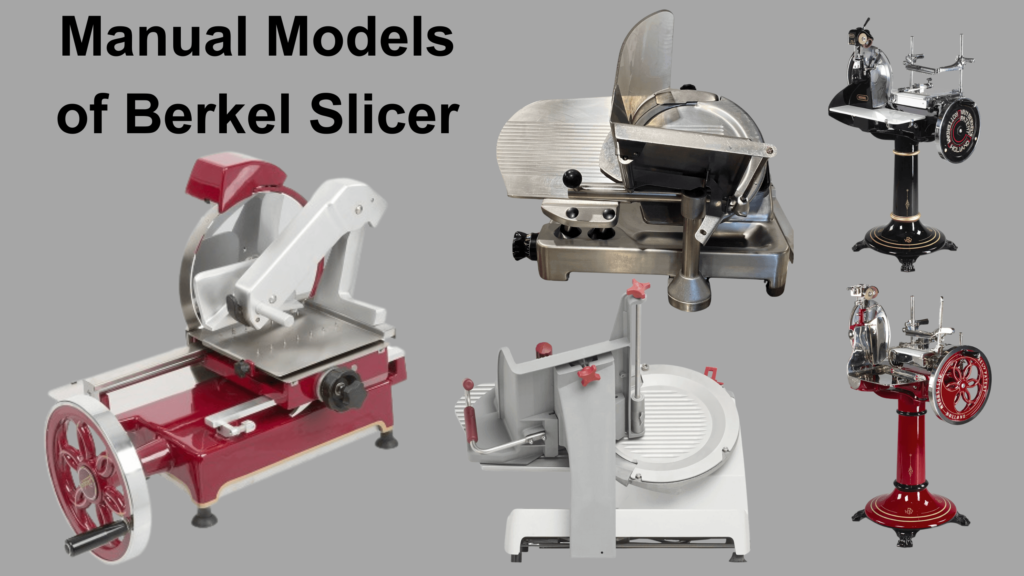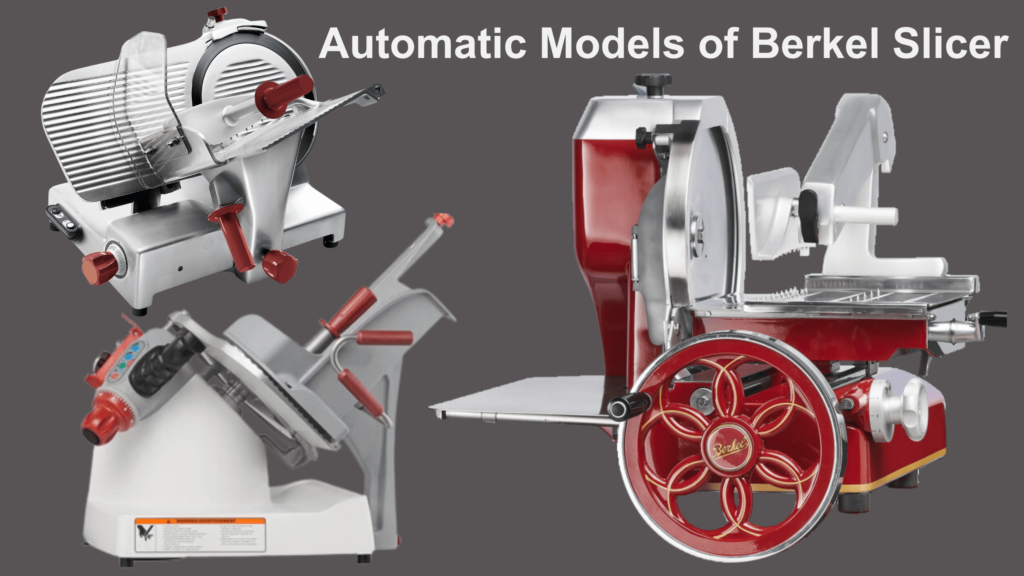Berkel slicers are renowned for their precision, durability, and efficiency in the food industry.
Whether it’s slicing meats, cheeses, or vegetables, these machines are indispensable in commercial kitchens around the world.
but first comes into mind a little question How Heavy Are Berkel Slicers? However, Understanding the weight variations of Berkel slicers is crucial for both logistical and operational reasons.
Exploring Weight Variations Slicer:
Berkel meat slicers come in various models and sizes, catering to different needs and preferences within the food industry.
Consequently, their weights can vary significantly depending on factors such as model type, size, and additional features.
Model Type of Related Product:
- Berkel offers a range of slicer models, including manual, automatic, and semi-automatic options. Manual slicers typically have fewer components and may be lighter compared to their automatic counterparts, which feature more sophisticated mechanisms for slicing.
- Automatic and semi-automatic slicers often incorporate motors and electronic components, adding to their overall weight. These models are designed for high-volume slicing operations, thus necessitating sturdier construction.
Size Meat Slicer:
- Berkel slicers come in different sizes to accommodate various slicing needs. Larger slicers with wider blades and bigger cutting capacities tend to be heavier due to the additional materials used in their construction.
- Smaller slicers, while lighter, are still robust and capable of delivering efficient slicing performance. They are ideal for establishments kitchens with limited space or lower slicing requirements.
Material Composition:
- The materials used in the construction of Berkel slicers also influence their weight. Models crafted from stainless steel or heavy-duty aluminum alloys are typically heavier but offer superior durability and resistance to corrosion.
- Lightweight materials may be used in certain components to enhance maneuverability without compromising slicing performance. However, the overall weight is still influenced by the structural integrity required to maintain stability during operation.
Implications of Weight:
Understanding the weight of Berkel slicers has several implications for businesses in the food industry:
Transport and Installation of Equipment:
- Heavier slicer models may require additional manpower or equipment for transport and installation. Proper handling is essential to prevent damage to the equipment and ensure safety during setup.
- Businesses considering the purchase of a Berkel slicer should assess their logistical capabilities to accommodate the weight of the chosen model, especially if delivery involves navigating narrow spaces or staircases.
Stability and Safety of Parts:
- The weight of a slicer contributes to its stability during operation. Heavier models are less prone to vibration or movement, providing a secure slicing platform that enhances safety for operators.
- Lightweight slicers may require additional stabilization measures to prevent shifting or tipping during use. This is particularly important in busy kitchen environments where safety is paramount.
Longevity and Durability of Accessory:
- In general, heavier Berkel slicers are built to withstand the rigors of continuous use in commercial settings. The robust construction and durable materials contribute to longevity, reducing the need for frequent maintenance or replacement.
- While lighter slicer models may offer convenience in terms of maneuverability, they may be more susceptible to wear and tear over time, especially in high-volume operations.
Model of Berkel Slicers:
These are just a few examples of Berkel slicer models available on the market, each designed to meet specific slicing needs and preferences within the food industry. From manual slicers suitable for small kitchens to automatic slicers equipped with advanced features for high-volume operations, Berkel offers a diverse range of options to cater to various slicing requirements.
| Model | Description | Features |
| Berkel X13 Plus | Manual slicer ideal for small to medium-sized kitchens | 13″ blade |
| Gravity feed slicing | ||
| Built-in sharpener | ||
| Berkel 909/1 | Semi-automatic slicer with compact design | 9″ blade |
| Belt-driven transmission | ||
| Slice thickness adjustment | ||
| Berkel 330M | Automatic slicer for high-volume slicing | 13″ blade |
| Touchscreen interface | ||
| Automatic carriage returns and shut-off | ||
| Berkel 827A | Automatic slicer with advanced safety features | 12″ blade |
| Non-slip feet | ||
| Emergency stop button | ||
| Berkel 330M-STD | Manual slicer with heavy-duty construction | 13″ blade |
| Stainless steel and aluminum construction | ||
| Slice thickness adjustment | ||
| Berkel 919/1 | Semi-automatic slicer with ergonomic design | 12″ blade |
| Carriage angle control | ||
| Removable meat grip |
Types of Berkel Slicers:
Berkel slicers are renowned for their precision, durability, and versatility in commercial kitchens. From manual to automatic models, Berkel offers a wide range of slicers to cater to various slicing needs within the food industry. Whether it’s manual, automatic, or semi-automatic, Berkel offers slicers that combine precision, efficiency, and durability to the demands. The different types of Berkel slicers are available in the market.
| Type | Description | Models |
| Manual Slicers | Operated manually, these slicers are ideal for establishments with lower slicing volumes. | Berkel 800 series Berkel 900 series |
| Automatic Slicers | Equipped with motors and automated slicing mechanisms, these slicers offer increased efficiency. | Berkel X13A Berkel 919A Berkel 330M Plus |
| Semi-Automatic Slicers | Combining manual and automatic functionalities, these slicers provide a balance between control and efficiency. | Berkel 827E Berkel 808 Plus |
Manual Berkel Slicers:

Manual slicers are operated by hand, offering precision slicing control. These slicers are suitable for establishments with moderate slicing requirements and where manual operation is preferred. Berkel’s manual slicers are available in the 800 and 900 series, each offering different features and slicing capacities.
- Berkel 800 Series:
Known for their compact design and ease of use, these slicers are ideal for smaller kitchens or delis. They feature adjustable slicing thickness and removable components for easy cleaning.
- Berkel 900 Series:
Designed for heavier slicing tasks, these slicers boast larger cutting capacities and enhanced durability. They are suitable for high-volume slicing operations in busy commercial kitchens.
Automatic Berkel Slicers:

Automatic slicers are equipped with motors and automated slicing mechanisms, allowing for faster and more efficient slicing. These slicers are ideal for establishments with high slicing volumes and where time-saving features are essential. Berkel offers several models in the automatic category, including:
- Berkel X13A Plus:
This high-performance slicer features advanced slicing technology and customizable slicing programs. It offers precise slicing control and can handle a wide range of slicing tasks with ease.
- Berkel 919A:
Known for its reliability and durability, this slicer is designed for continuous use in demanding kitchen environments. It offers automatic carriage return and adjustable slicing thickness for maximum versatility.
- Berkel 330M:
Compact yet powerful, this slicer is perfect for smaller kitchens or specialty food shops. It features a built-in sharpener and automatic blade removal for easy cleaning and maintenance.
Semi-Automatic Berkel Slicers:

Semi-automatic slicers combine manual control with automatic functionality, providing operators with flexibility and efficiency. These slicers are suitable for establishments that require a balance between precision slicing and time-saving features. Berkel semi-automatic slicers include:
- Berkel 827E Plus:
This versatile slicer offers manual carriage movement and automatic slicing action, allowing for precise control over slicing thickness. It features a gravity-fed blade and removable components for easy cleaning.
- Berkel 808:
Designed for convenience and performance, this slicer features automatic carriage return and adjustable slicing thickness. It is ideal for medium to heavy slicing tasks in busy kitchen environments.
at the end of How Heavy Are Berkel Slicers:
The weight of Berkel slicers varies depending on factors such as model type, size, and material composition.
Understanding these variations is essential for businesses in the food industry, as it impacts logistical considerations, operational stability, and long-term durability.
By evaluating their specific slicing needs and assessing the implications of slicer weight, businesses can make informed decisions when selecting the ideal Berkel slicer for their operations.
Berkel slicers come in various types and models, each catering to different slicing needs within the food industry.
Whether it’s manual, automatic, or semi-automatic, Berkel offers slicers that combine precision, efficiency, and durability to meet the demands of commercial kitchens around the world.
Frequently Asked Questions About How Heavy Are Berkel Slicers
What makes Berkel slicers stand out from other brands?
Berkel slicers are renowned for their precision engineering, durability, and versatility. They are designed to deliver consistent slicing results while withstanding the rigors of commercial kitchen environments. With a legacy of innovation dating back to 1898, Berkel continues to set the standard for quality slicers in the food industry.
Are Berkel slicers suitable for small-scale operations?
Yes, Berkel offers a range of slicers suitable for various scales of operation. From manual slicers ideal for small delis or specialty shops to automatic slicers designed for high-volume slicing in large establishments, Berkel has options to suit diverse needs.
Can Berkel slicers accommodate different types of food?
Yes, Berkel slicers are versatile and can handle a wide range of food slicer items, including meats, cheeses, vegetables, and fruits. With adjustable slicing thickness and blade options, operators can customize slicing parameters to suit the specific requirements of each food slicer item.
How easy is it to clean and maintain Berkel slicers?
Berkel slicers are designed with ease of cleaning and maintenance in mind. Many models feature removable components, such as blades and food carriage assemblies, which can be easily disassembled for thorough cleaning. Additionally, some models include built-in sharpeners to maintain blade sharpness for optimal slicing performance.
